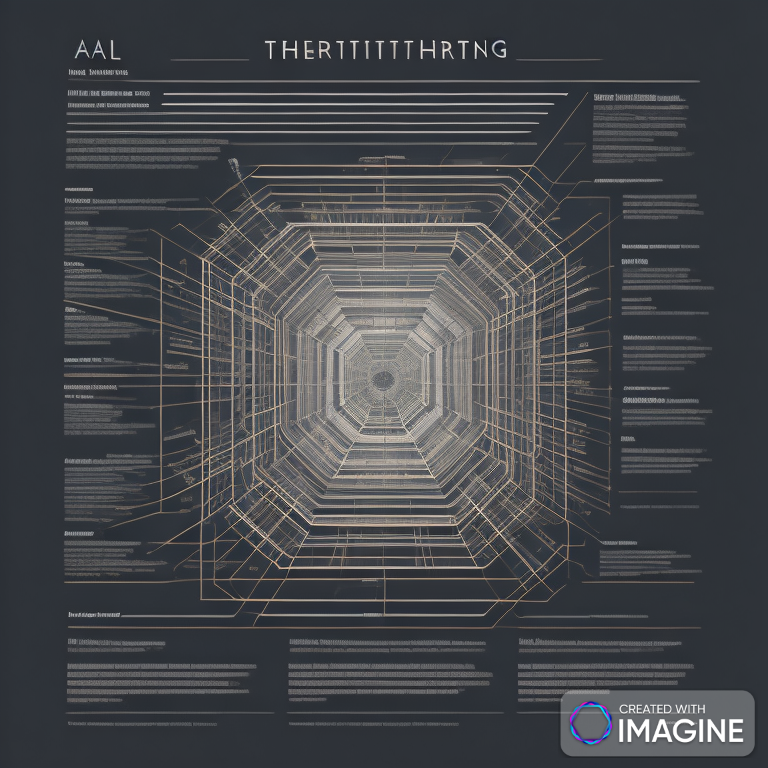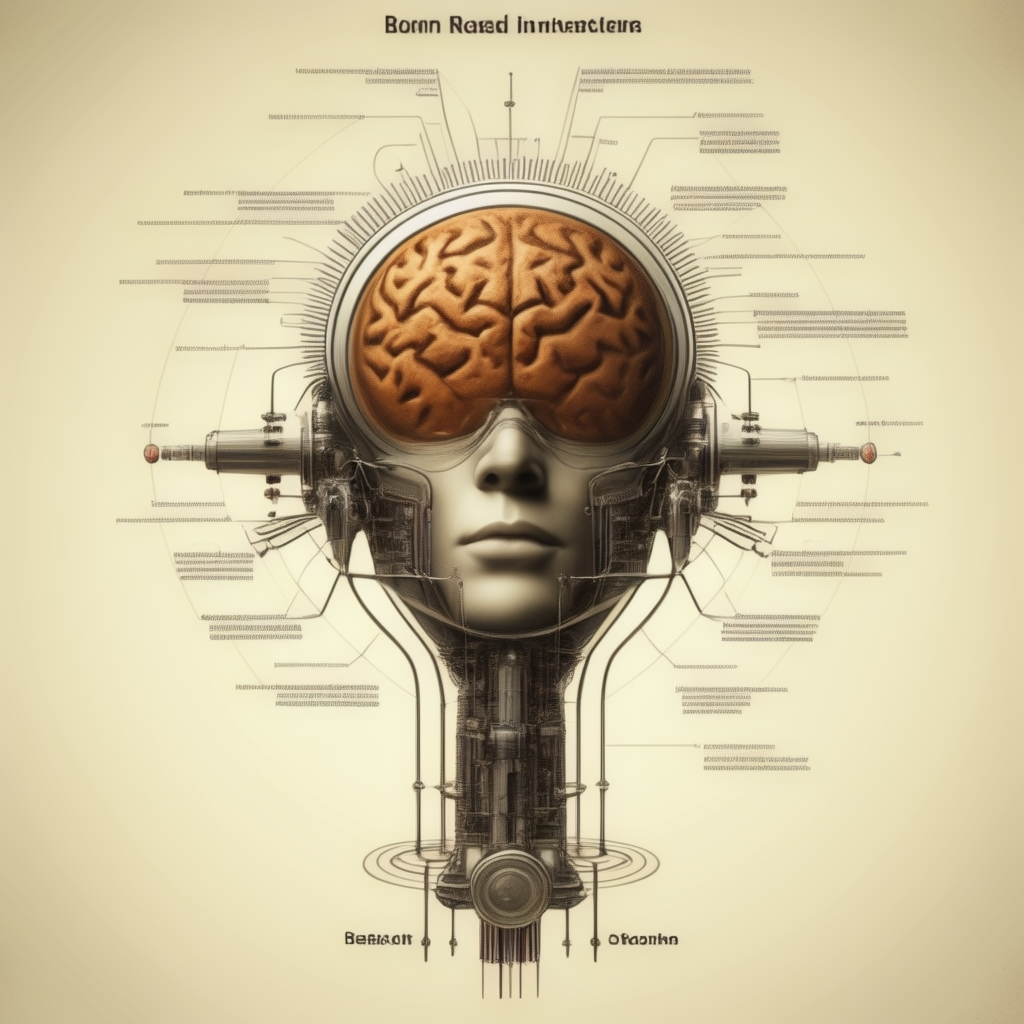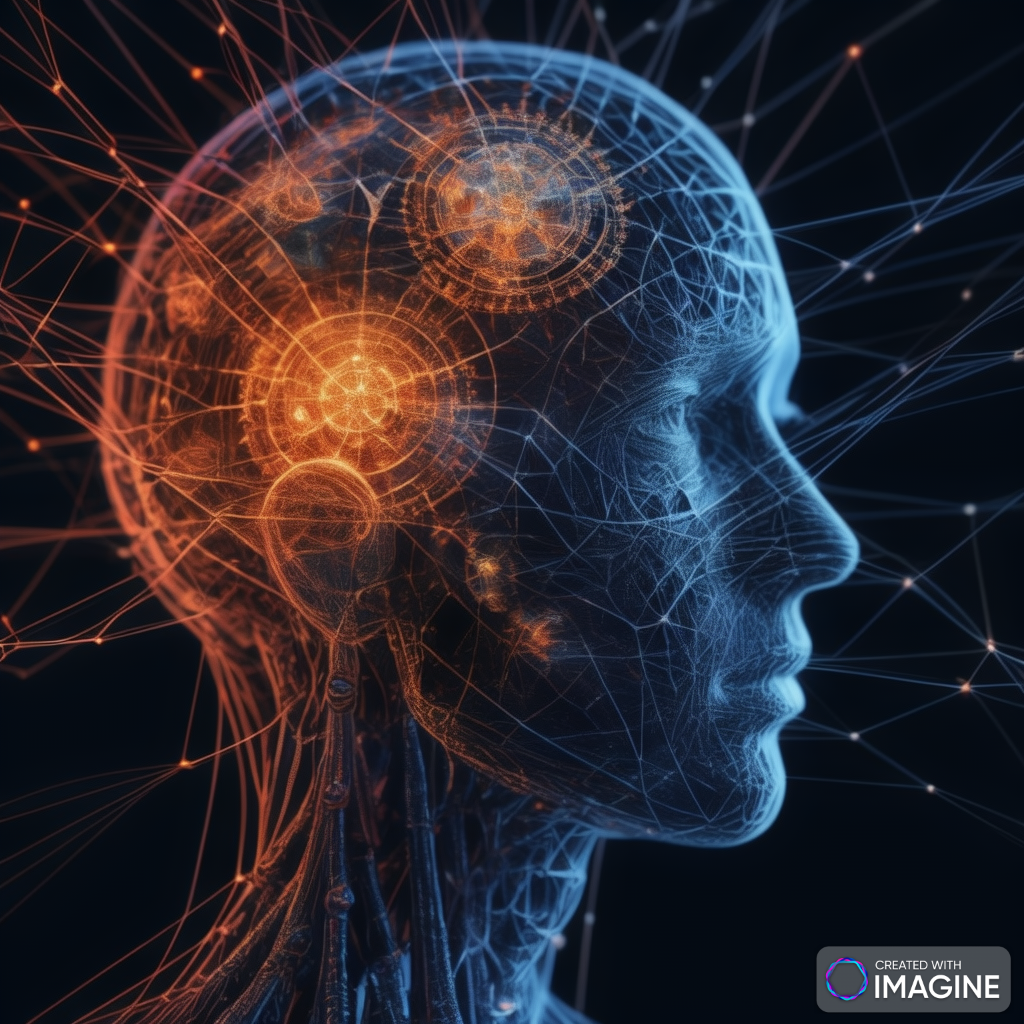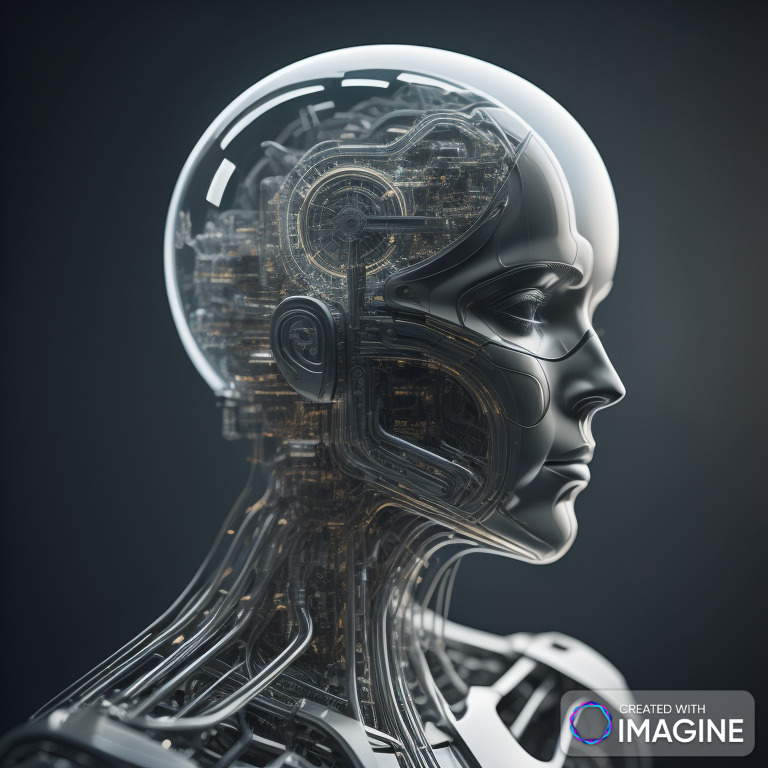The “Total Turing Test” is a concept related to the Turing Test in the field of artificial intelligence. The Turing Test, proposed by Alan Turing in 1950, is a test of a machine’s ability to exhibit human-like intelligence. In a traditional Turing Test, a human judge engages in a natural language conversation with both a human and a machine, without knowing which is which. If the judge cannot reliably distinguish between the human and the machine based on their responses, the machine is considered to have passed the Turing Test.
The “Total Turing Test” extends this idea beyond just natural language processing to include a broader range of cognitive abilities that reflect human intelligence. The concept suggests that for a machine to truly pass a comprehensive Turing Test, it should be able to demonstrate human-like intelligence across a wide spectrum of tasks and capabilities, including:
let’s expand on the components of the Total Turing Test in even greater detail:
1.Ethical Reasoning:
- An advanced AI system should be capable of ethical reasoning, considering the consequences and moral implications of its actions. This involves making decisions that align with ethical principles and demonstrating an understanding of societal values.
2.Domain Adaptability:
- Domain adaptability measures the machine’s capability to apply knowledge and skills learned in one domain to another. It involves generalizing information and adapting solutions to novel situations, showcasing a level of flexibility and versatility in problem-solving.
3.Memory and Recall:
- Memory is a crucial aspect of intelligence. An AI system should be able to store, retrieve, and utilize information from past experiences efficiently. This includes short-term memory for immediate tasks and long-term memory for retaining knowledge over extended periods.
5.Common Sense Reasoning:
- Common sense reasoning involves the ability to make logical deductions based on innate understanding and general knowledge. This includes making assumptions, filling in missing information, and drawing conclusions that align with human-like common sense.
6.Spatial Reasoning:
- Spatial reasoning pertains to understanding and manipulating spatial relationships. This is crucial for tasks such as navigation, object manipulation, and interpreting visual scenes in three-dimensional space.
7.Decision-Making Under Uncertainty:
- The real world is often uncertain, and an intelligent AI should be capable of making decisions even in the face of incomplete or uncertain information. This involves probabilistic reasoning, risk assessment, and adaptive decision-making strategies.
8.Long-Term Planning:
- Long-term planning extends beyond immediate problem-solving. An intelligent machine should be capable of setting long-term goals, developing strategic plans, and making decisions that align with a broader vision or objective.
- Self-Awareness:
- Self-awareness involves the machine’s ability to recognize its own state, capabilities, and limitations. While this may not necessarily imply consciousness, it does involve an understanding of its own functioning, performance, and potential areas for improvement.
- Continuous Learning:
- Beyond adapting to new situations, an intelligent AI should demonstrate a commitment to continuous learning. This involves seeking out new information, updating knowledge bases, and improving performance based on ongoing experiences.
- Explainability and Transparency:
- For AI systems to be truly intelligent, they should be able to explain their decisions and actions in a transparent manner. This involves providing clear justifications for why a particular choice was made, promoting trust and accountability.
- Collaboration and Teamwork:
- Intelligent machines may be required to work collaboratively with humans and other machines. This involves effective communication, coordination, and synergy in achieving common goals within a team.
- Natural Language Understanding:
- This involves the machine’s ability to comprehend and generate human language in a way that demonstrates not only syntax and grammar but also semantic understanding. It includes contextual interpretation, understanding nuances, and responding appropriately in various linguistic scenarios.
- Visual Perception:
- Visual perception assesses the machine’s capacity to interpret visual information similar to how humans do. This goes beyond simple object recognition and involves understanding scenes, detecting patterns, recognizing faces, and comprehending the context of visual data, such as in image or video understanding.
- Problem Solving:
- Problem-solving in the context of the Total Turing Test requires the machine to demonstrate its ability to approach and solve problems across different domains. This could involve mathematical problem-solving, logical reasoning, strategic planning, and adapting to unforeseen challenges.
- Learning and Adaptation:
- Machines should be capable of learning from experience and adapting to new information. This includes both supervised learning, where the machine learns from labeled data, and unsupervised learning, where it discovers patterns and information independently.
- Reasoning and Critical Thinking:
- Reasoning involves drawing logical inferences and conclusions, while critical thinking encompasses the ability to analyze, evaluate, and synthesize information. A machine passing this aspect of the Total Turing Test should exhibit advanced cognitive processes similar to human reasoning and critical thinking.
- Emotional Intelligence:
- Emotional intelligence involves recognizing, understanding, and responding to human emotions. This includes not only recognizing facial expressions but also understanding the emotional context of a conversation and responding empathetically.
- Creativity:
- Creativity in AI refers to the generation of novel ideas, solutions, or artistic expressions. A machine demonstrating creativity might produce unique pieces of writing, art, or music that exhibit originality and innovation.
- Physical Interaction:
- This aspect assesses the machine’s ability to interact with the physical world. It involves manipulating objects, navigating environments, and responding to physical cues. For example, a robot with the capability to perform tasks in the physical world, such as picking up objects or navigating obstacles, would demonstrate physical interaction skills.
let’s further expand on the components of the Total Turing Test:
1.Multi-Modal Understanding:
- Multi-modal understanding involves integrating information from various modalities, such as text, images, and audio. An intelligent system should be able to comprehend and synthesize information from diverse sources simultaneously.
2.Temporal Reasoning:
- Temporal reasoning refers to the understanding of time-related concepts. This includes sequencing events, recognizing patterns over time, and making predictions about future states based on historical data.
3.Metacognition:
- Metacognition involves the ability to monitor and regulate one’s own cognitive processes. An intelligent AI should be capable of self-assessment, recognizing when it needs more information or adjusting its strategies based on its own performance.
4.Cultural Sensitivity:
- Cultural sensitivity involves understanding and respecting cultural nuances, values, and norms. An intelligent machine should be able to adapt its behavior and communication style to different cultural contexts, avoiding misunderstandings.
5.Biological Understanding:
- While not required for all AI systems, an advanced AI might demonstrate a basic understanding of biological systems. This could include knowledge of anatomy, physiology, and biological processes, depending on the intended application.
6.Proactive Learning:
- Proactive learning goes beyond reactive adaptation. An intelligent system should actively seek out new information, explore uncharted territories, and initiate learning processes without explicit external stimuli.
7.Global Context Awareness:
- Understanding global context involves considering broader factors, such as geopolitical events, economic trends, or environmental changes. An intelligent system should be aware of the larger context in which it operates.
8.Resilience to Bias:
- An intelligent AI should be designed to recognize and mitigate biases in its decision-making processes. This involves addressing biases in training data, algorithms, and outputs to ensure fair and unbiased outcomes.
9.Experiential Learning:
- Experiential learning involves gaining insights and knowledge through hands-on experiences. An intelligent system should be able to learn not only from data but also from real-world interactions and feedback.
10.Affective Computing:
- Affective computing relates to the machine’s ability to recognize, interpret, and respond to human emotions. This includes understanding emotional cues in communication and adapting its responses accordingly.
11.Interdisciplinary Knowledge:
- An intelligent system may benefit from interdisciplinary knowledge, integrating insights from various fields such as psychology, sociology, economics, and other relevant disciplines to enhance its understanding and decision-making.
12.Domain Transferability:
- Domain transferability assesses how well a machine can apply its knowledge and skills from one domain to another. An intelligent system should be able to transfer its expertise to new, unfamiliar domains.
The Total Turing Test, with its extensive list of capabilities, underscores the complexity and depth of true artificial general intelligence. Developing machines that exhibit such a broad range of abilities remains a grand challenge in the field of AI research.
let’s continue to explore additional facets of the Total Turing Test in detail:
- Crisis Response:
- Crisis response evaluates the machine’s ability to respond effectively in emergency situations. This includes understanding the urgency of a scenario, coordinating responses, and making decisions under time constraints.
- Intuition involves making decisions based on instinct or a ‘gut feeling.’ An intelligent machine should be capable of intuitive decision-making, leveraging past experiences and pattern recognition.
2. Narrative Comprehension:
- Narrative comprehension assesses the machine’s capability to understand and interpret complex stories, including identifying key plot points, character motivations, and thematic elements.
3.Bioethics Understanding:
- Bioethics understanding involves the ability to navigate ethical considerations specifically related to biological sciences, healthcare, and life sciences.
4.Quantum Computing Awareness:
- In an era of emerging technologies, an intelligent system should be aware of advances in quantum computing, understanding its potential implications and applications.
5.Episodic Memory:
- Episodic memory involves the ability to recall specific events or episodes from one’s past. An intelligent system should demonstrate a form of memory that captures personal experiences.
6.Adaptability to Novel Environments:
- An intelligent machine should be capable of adapting to novel and dynamic environments, demonstrating flexibility in responding to new and unpredictable situations.
7.Personalization:
- Personalization involves tailoring responses and experiences based on individual preferences and characteristics. An intelligent system should adapt its interactions to meet the unique needs of different users.
8.Tolerance for Ambiguity:
- Tolerance for ambiguity assesses the machine’s ability to handle situations with incomplete or uncertain information, demonstrating resilience in the face of ambiguity.
9.Consciousness Simulation:
- While true consciousness remains a philosophical and scientific challenge, an intelligent system might simulate aspects of consciousness, such as self-awareness and subjective experience.
11. Psychological Well-being Understanding:
- An intelligent AI should be capable of recognizing signs of psychological well-being or distress in humans and responding appropriately, showing sensitivity to mental health considerations.
12. Rhetorical Understanding:
- Rhetorical understanding involves the ability to recognize and respond to rhetorical devices and techniques used in language, including persuasion, sarcasm, or irony.
13.Economic Understanding:
- An intelligent system should demonstrate a grasp of economic principles, including supply and demand dynamics, market forces, and the broader economic impact of decisions.
14. Predictive Ethics:
- Predictive ethics involves anticipating the ethical implications of potential actions and decisions, considering the consequences before taking specific courses of action.
15.Global Governance Awareness:
- Awareness of global governance structures and geopolitical considerations is crucial for an intelligent system to understand the broader political and social context in which it operates.
16.Ethical Decision-Making:
- Ethical decision-making involves not only recognizing ethical considerations but actively making decisions aligned with ethical principles, even in challenging or ambiguous situations.
17. Existential Risk Consideration:
- An intelligent system should be capable of recognizing and considering existential risks, demonstrating an understanding of potential threats to humanity’s long-term survival.
Achieving success in the Total Turing Test requires the development of AI systems that not only excel in individual cognitive domains but can seamlessly integrate these capabilities across a broad spectrum of tasks. The pursuit of artificial general intelligence (AGI) encompasses these multifaceted challenges and represents the ongoing frontier of AI research.
The Total Turing Test, with its comprehensive list of capabilities, paints a detailed picture of what a truly intelligent and adaptive artificial system might look like. Each of these facets presents unique challenges, and achieving competence across all of them represents the ongoing frontier of AI research.







